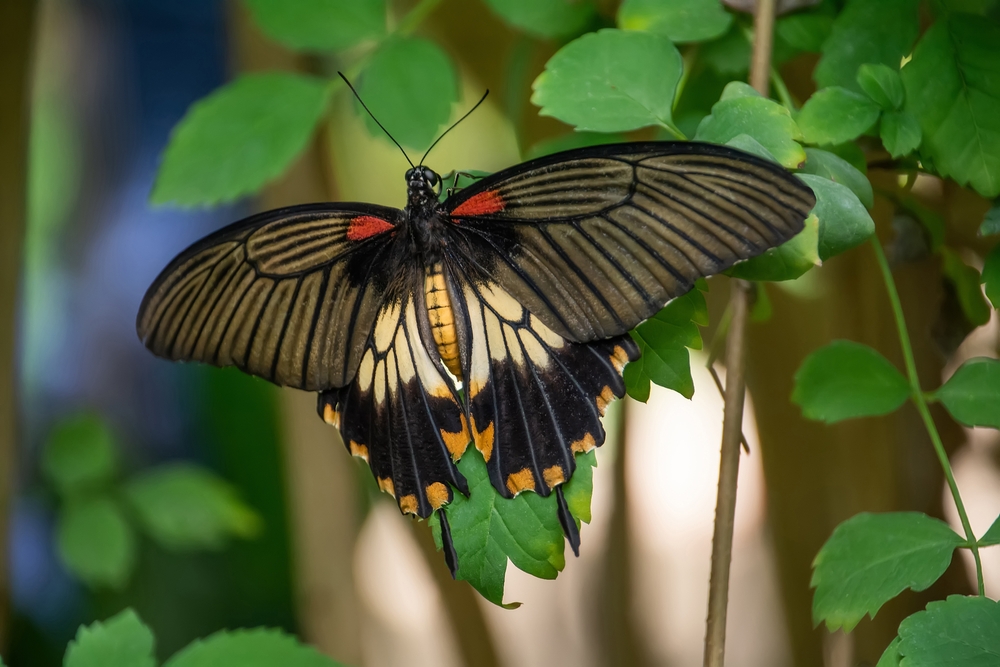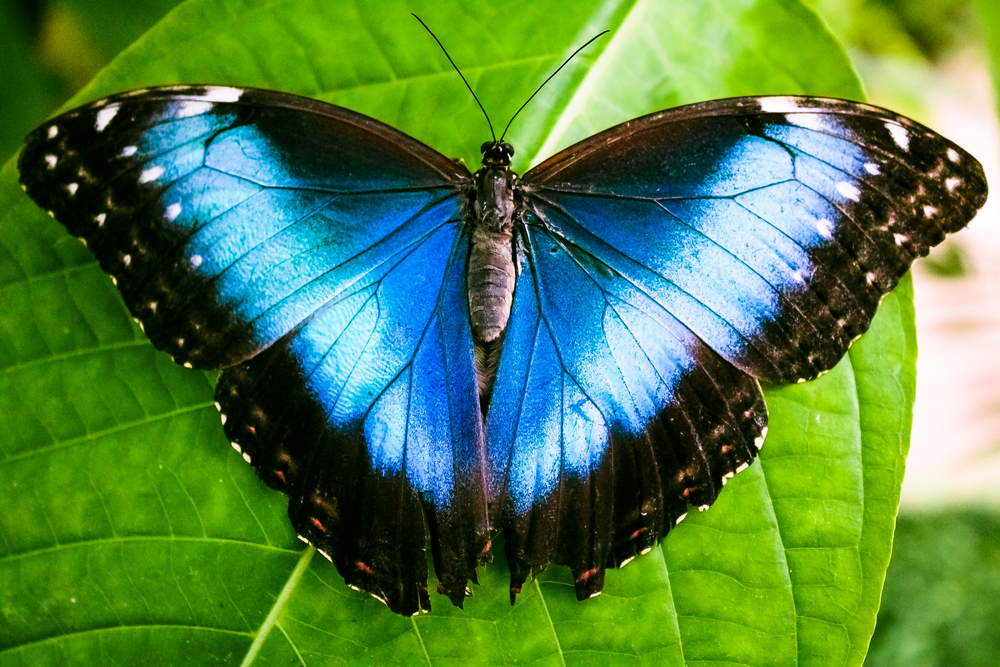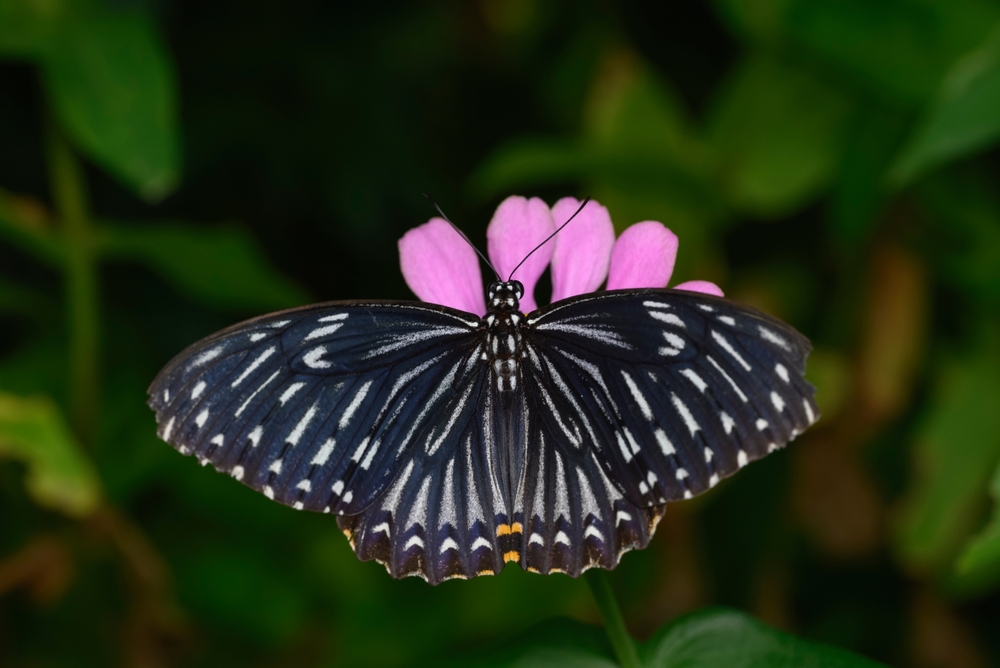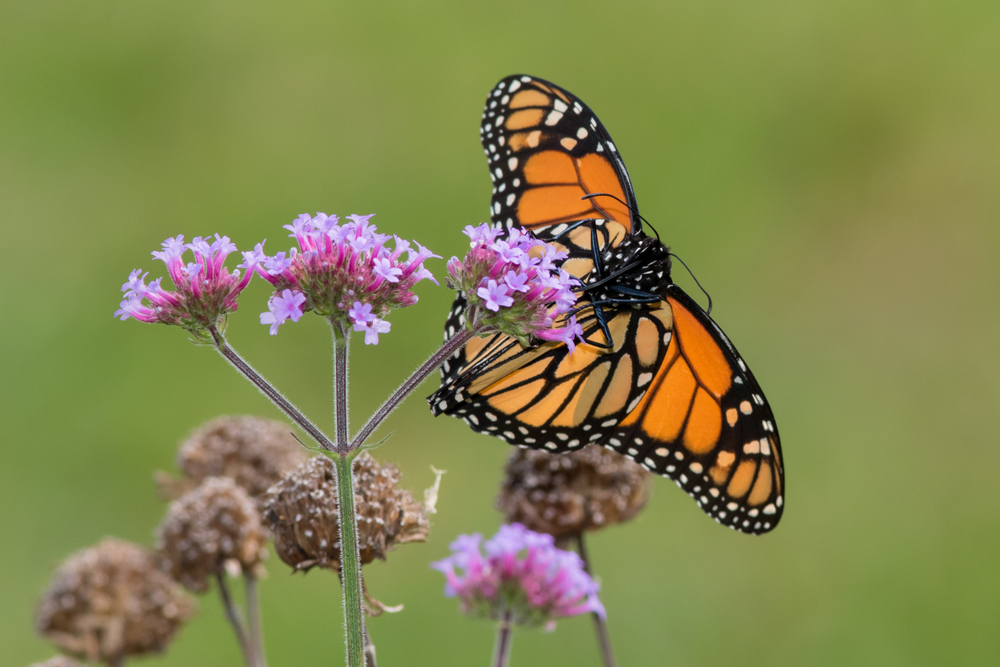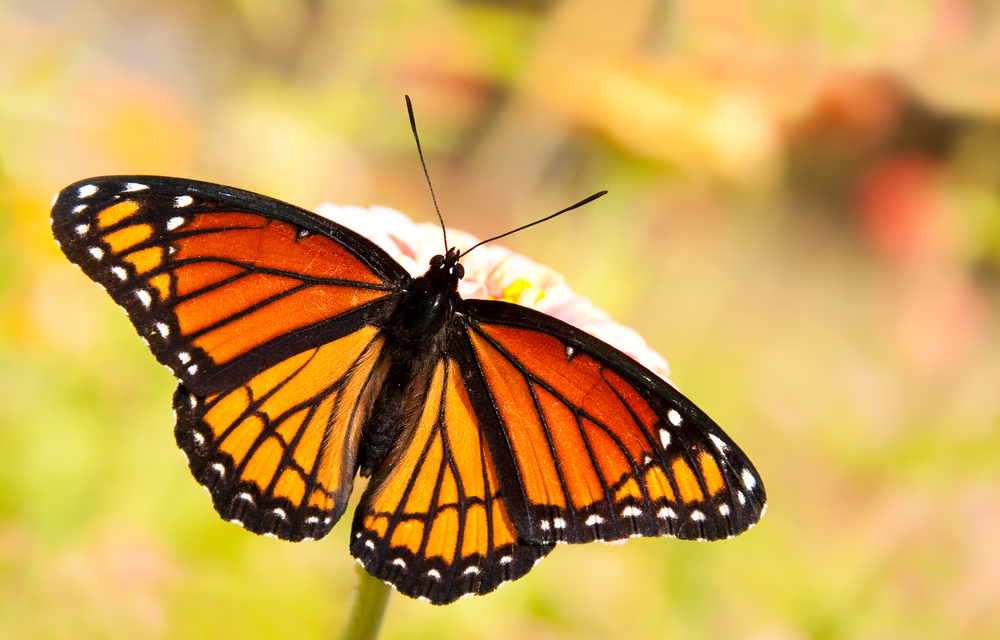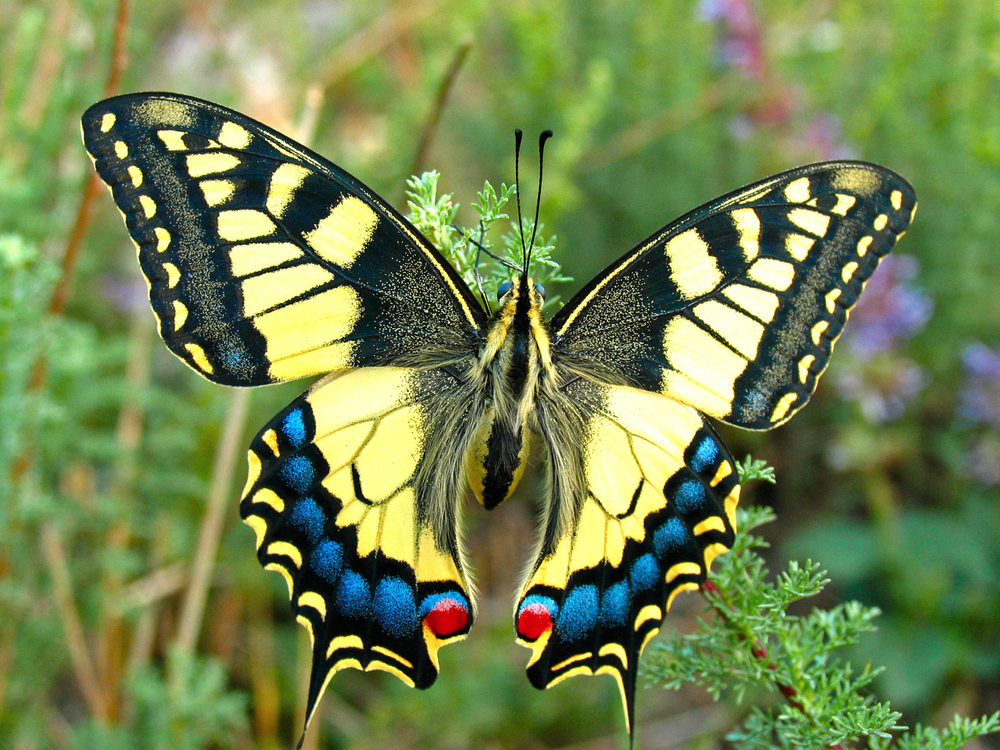Uniqueness
The Common Mormon is one of Asia’s most fascinating butterflies due to its female mimicry, sexual dimorphism, and adaptability. It serves as a prime example of evolution in action, particularly in how females visually imitate toxic species to avoid predation.
Female Mimicry Polymorphism:
Unlike most butterflies, females of the Common Mormon occur in multiple forms, some of which mimic unpalatable species such as the Common Rose (Pachliopta aristolochiae). This is a classic case of Batesian mimicry, where a harmless species gains protection by imitating a toxic one.
-
Form stichius mimics the red-and-black Common Rose
-
Form romulus resembles the Crimson Rose
-
Form cyrus is non-mimetic and rare
This mimicry varies geographically, depending on the abundance of the toxic model species.
Sexual Dimorphism:
The species displays strong sexual dimorphism:
-
Males have a consistent, non-mimetic black-and-white pattern
-
Females appear in multiple, regionally adaptive mimetic forms that look completely different from the male and from one another
Swallowtail Without Uniformity:
While most swallowtails share similar wing shapes and patterns, Papilio polytes breaks this mold with tail-bearing hindwings combined with intraspecific variation. This makes it one of the most visually variable swallowtails in Asia.
Urban Adaptability:
The Common Mormon thrives in natural forests, plantations, and urban gardens, particularly where citrus plants are abundant. It is one of the few large butterflies that flourishes in densely populated regions, making it familiar to both farmers and city-dwellers.
Behavioral Adaptability:
-
Males are active and darting
-
Mimetic females adopt slower, floating flight patterns to reinforce their resemblance to toxic models
This combination of visual and behavioral mimicry strengthens their defense against predators.
Ecological Role:
As both a specialist herbivore (in larval stage) and a generalist nectar feeder (in adult stage), the Common Mormon plays a key role in pollination and butterfly-plant interactions across ecosystems.
The Common Mormon’s remarkable female polymorphism, evolutionary mimicry, and urban resilience make it one of the most studied and admired butterflies in Asia—and a standout example of natural selection in action.



































































